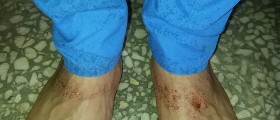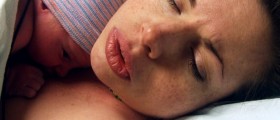
Introduction tubal ligation
In the United State alone, over 650,000 women undergo tubal ligation, which ends their ability to have children. However, a woman can change her mind about it and undergo the tubal ligation reversal.
According to the most recent statistics, about six percent of women will decide that they want the procedure reversed.
The effects a woman experiences after tubal ligation is referred to as post tubal ligation syndrome.
Some symptoms of this syndrome include irregular, heavy and painful periods, early onset of menopause symptoms, loss of libido, worsening of premenstrual symptoms, anxiety, vaginal dryness, palpitations, hot flashes, cold flashes, trouble sleeping, and mood swings.
Success rates of tubal ligation reversal
If a women decides to get the procedure reversed, there are different factors that depend on how successful it will be.
It all depends on what kind of tubal ligation was performed, the age of the women when she seeks the reversal, and the amount of damage that was caused by the original tubal ligation.
A woman that is over 40 years of age will have to discuss the decision with the doctor in order to see if a reversal will be possible or whether it is safe for her.
The best candidates for the reversal are those who had a removal or a small section of the fallopian tubes or those whose tubal ligation was done with clips and rings placed around the tubes in order to prevent eggs from being released during ovulation.
All in all, the success rate for the reversal can vary drastically, in between 20 and 70 percent, depending on the circumstances.ProcedureFirst, the doctor will have to be provided with all of the facts and records of the woman’s tubal ligation procedure.
The reversal uses microsurgery to rejoin the remaining sections of the fallopian tubes.
Since the diameter of the fallopian tubes varies, the best chance for success is when the diameters of the two remaining tubes are as identical as possible.
The success rate is much lower if there is a big difference in the diameter of these tubes.
It is said that the best possible candidate for reversal is a women who has an almost equal diameter of the remaining ends of the tubal sections and tubes that are at least three or four inches long after the reversal process.
Going through with the reversal procedure is something that needs to be taken very seriously and a woman must think long and hard about the decision before going through with the reversal surgery.
If the woman has a lower percentage rate of a successful reversal and pregnancy afterwards, then it is recommended that they try in vitro fertilization once the process has been reversed.





_f_280x120.jpg)










Your thoughts on this
Loading...